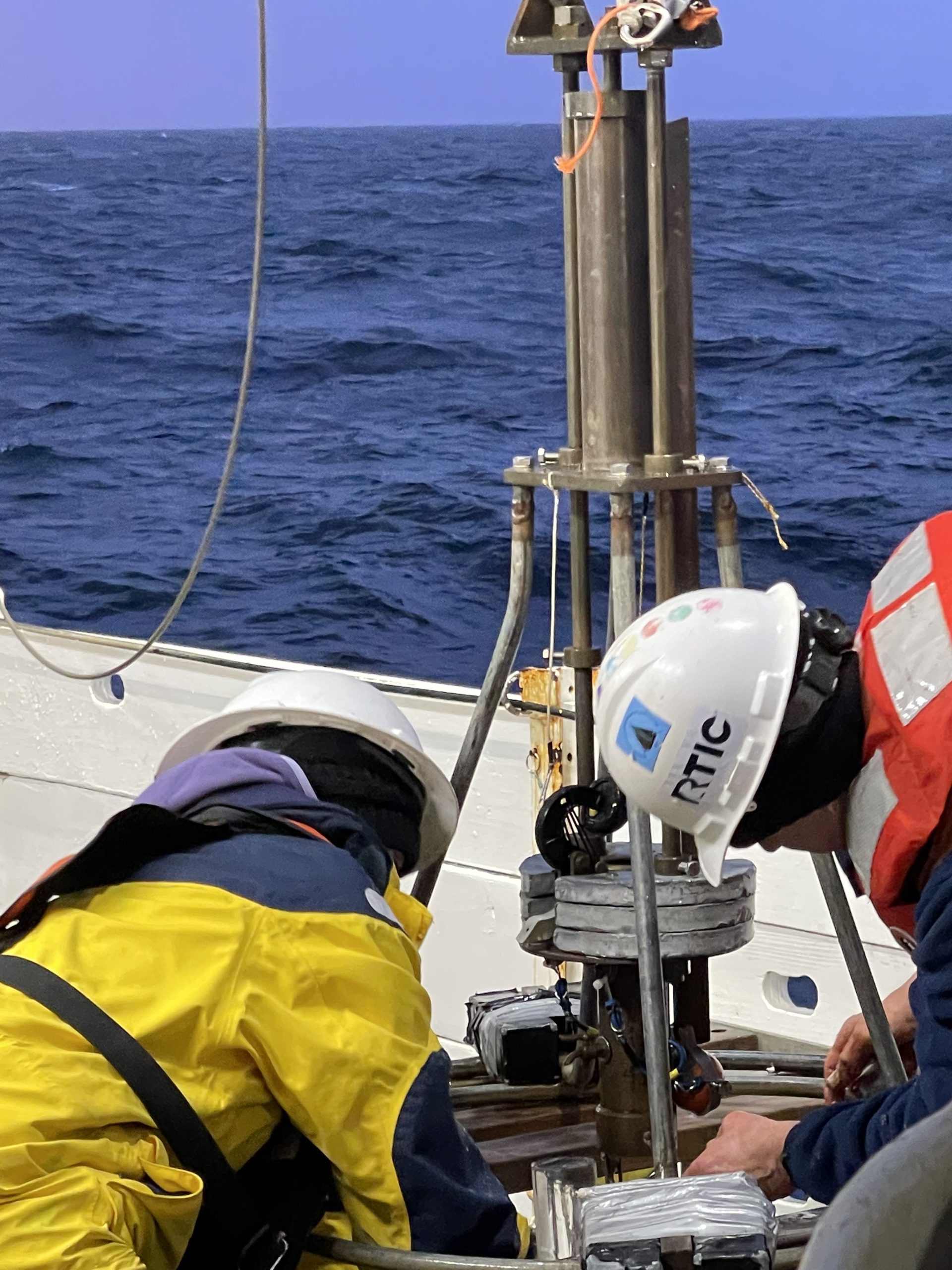
NCCOS scientists and their partners from Woods Hole Oceanographic Institute recently completed the annual Gulf of Maine cyst sampling cruise aboard NOAA Ship Henry B. Bigelow (February 8-15, 2022). The research cruise is conducted late fall or winter each year to measure Alexandrium catenella cyst abundance in seafloor sediment samples. The data from this cruise is used to inform the red tide forecast for the Gulf of Maine each spring and summer.
Alexandrium catenella is a dinoflagellate species that survives the cold winter months by forming dormant seed-like cysts each autumn that are moved by currents and accumulate in ocean sediments. The location where the cysts settle and their abundance varies from year to year, depending on regional current patterns. When water temperatures warm in the spring, the cysts germinate into flagellated adults that repopulate the water column and are transported to new areas by ocean currents. Blooms of Alexandrium catenella produce toxins that can cause paralytic shellfish poisoning in people who consume tainted shellfish. The annual red tide forecast enables proactive responses to protect public health and coastal economies.
The scientists collected sediment samples using a Craib corer and conductivity, temperature, and depth (CTD) data along an array of 56 stations throughout the Gulf of Maine between Cape Cod and the U.S.–Canadian border. Once a core was collected from the bottom to the Gulf, the team sectioned it into layers and processed samples from the layers to collect the cysts.
The cysts in each sample will then be counted under a microscope at the NCCOS Beaufort Laboratory in North Carolina. A map of the distribution and abundance of cysts will be used in a model along with physical parameters collected via CTD casts at each station and in-season meteorological data to produce the harmful algal bloom forecast model for the Gulf of Maine spring 2022 forecast. Subsamples taken from the same cores of sediment will also be used to investigate molecular methods that may replace visual counting of cysts and speed up the cyst quantification process.
In addition to the seasonal forecast, weekly forecasts will be produced and available online throughout the spring and summer months.
